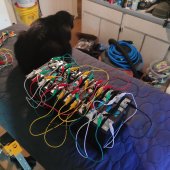Don B. Cilly
Energetic energy padawan
Testing resistance... you might want to to that under some sort of load - carrying the same current you plan to when using them.
The thing is, with those... you'll see if you replace the wires... for one thing they tend to be badly crimped, for another, the wires themselves are so thin, you can use them as fuses (if you don't mind the burnt rubber smell ;·). Anything over 2-3 amps going through them will melt them. :·)
-
The thing is, with those... you'll see if you replace the wires... for one thing they tend to be badly crimped, for another, the wires themselves are so thin, you can use them as fuses (if you don't mind the burnt rubber smell ;·). Anything over 2-3 amps going through them will melt them. :·)
-




